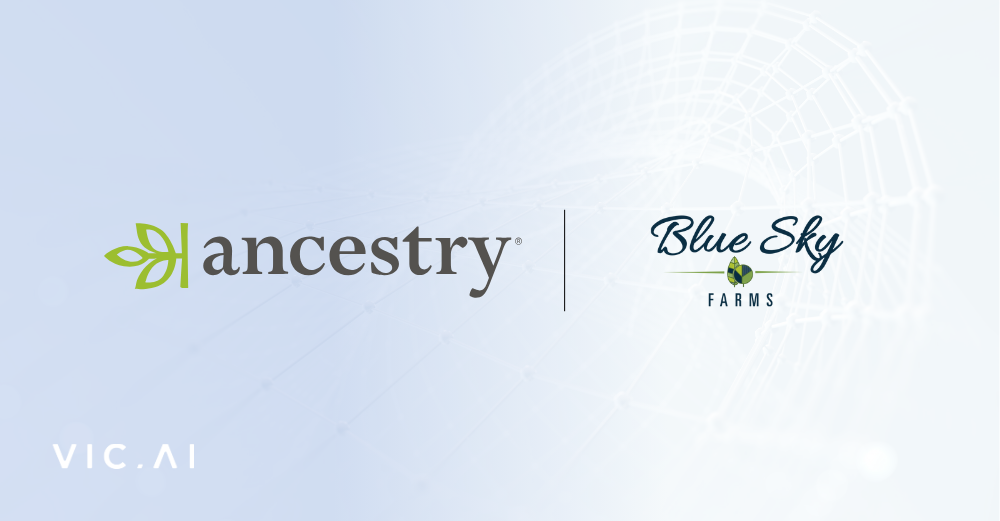AI is everywhere in accounting now. From machine learning (ML) and natural language processing to computer vision and RPA, different types of AI are handling different accounting tasks. But which one does what?
- Which AI reads invoices?
- Which predicts cash flow?
- Which takes care of the repetitive clicks?
This guide gives you a clear, detailed breakdown.
AI types in accounting: an overview
Interested in the details? Take a closer look.
What is artificial intelligence in accounting?
Artificial Intelligence (AI) in accounting refers to technologies that can analyze financial data, learn from patterns, and automate repetitive processes that used to require manual effort. Instead of just following fixed rules, AI systems improve over time by processing large amounts of financial information, helping accountants move faster and make more accurate decisions. In short, AI for finance and accounting isn’t about replacing people. It’s about reducing the time spent on routine work and creating more space for strategic analysis and decision-making.
Also Read: 10 Ways CFOs Are Saving with AI in Finance.
6 different types of AI In accounting
As already said, each type of AI has a different role to play in accounting. Let’s walk through them one by one and see how AI is used in accounting today.
Machine learning (ML)
What it does
- Learns from historical finance data to find patterns and make predictions.
- Improves as more invoices, transactions, and outcomes flow through the system.
How it’s used in accounting
- Fraud detection and anomaly spotting: Notices if an expense looks out of place or a payment seems risky.
- Forecasting: Predicts future cash flow, expenses, or late payments based on history.
- Duplicate detection: Catches invoices that look suspiciously similar before they’re paid.
Why it matters
- ML answers the practical question: “Can AI do accounting predictions as well as humans?” In many cases, yes, it can analyze far more data in less time.
- It raises first-pass accuracy, reduces risk, and supports smarter decisions.
How to get started
- Pilot cash-flow forecasting in your AP/AR process.
- Track prediction accuracy against your actuals.
- Use anomaly alerts for large or unusual payments.
Natural language processing (NLP)
What it does
- Reads and understands text/numbers in documents and messages, without needing templates or human re-keying.
How it’s used in accounting
- Invoice extraction: Pulls vendor name, dates, amounts, and coding directly from invoices.
- Contract analysis: Reads payment terms or compliance notes from agreements.
- Policy Q&A: Let staff or vendors ask questions (“What’s our expense limit?”) and get quick answers.
Why it matters
- AI in finance and accounting speeds up approvals by cutting manual data entry, handling it with high accuracy, even across different formats.
How to get started
- Replace template-based OCR with template-free NLP for invoices.
- Add an NLP search over your policy docs for staff self-service.
- Track: extraction accuracy, exception rate, approval cycle time.
Computer vision (CV)
What it does
- “Sees” images/PDFs to capture fields, classify documents, and verify matches.
How it’s used in accounting
- Receipt scanning: Matches receipts to expense claims automatically.
- Invoice matching: Helps compare invoices to purchase orders and delivery receipts. (often called a three-way match: invoice → PO → receipt).
- Fraud detection: Flags if a document has been altered, duplicated, or inconsistent.
Why it matters
- Finance work is still document-heavy. CV handles messy, multi-format files common in AP/expense workflows.
How to get started
- Enable receipt scanning in your expense management.
- Use CV to match invoices against POs in AP.
Robotic process automation (RPA)
What it does
- Automates repetitive clicks/keystrokes between systems (ERP, inbox, portals).
How it’s used in accounting
- Data entry: Posts journal entries or vendor details into your ERP.
- Reconciliations: Automates recurring, rules-based reconciliations.
- Reporting: Pulls and distributes standard reports on schedule.
Why it matters
- It’s quick to deploy, delivers immediate time savings, and shows leadership what automation looks like.
How to get started
- Automate stable, repetitive tasks (status updates, reconciliations).
- Add controls - alerts, audit logs - so you can trust the outputs.
Also read: The Difference Between Autonomous Invoice Processing and AP Automation.
Predictive analytics
What it does
- Uses historical data and AI models to project outcomes and recommend actions. (Basically, it demonstrates how AI is used in accounting to plan budgets and forecast revenue.)
Where you’ll use it
- Cash-flow forecasting: Predicts liquidity gaps before they happen.
- Budgeting: Spots likely to overspend or revenue shortfalls.
- Scenario modeling: Tests “what if” cases (e.g., hiring, pricing, FX changes).
Why it matters
- It moves accountants from reactive reporting to proactive advising.
How to get started
- Compare AI forecasts with your manual forecasts.
- Use predictive alerts for budget owners to reduce overspend.
Generative AI (assistants and summaries)
What it does
- Drafts and summarizes text; explains financial content in natural language.
How it’s used in accounting
- Exception summaries: Explains why an invoice was flagged for review.
- Close documentation: Draft narratives for reconciliations or variances.
- Vendor communication: Drafts polite, accurate vendor emails.
Why it matters
- It improves communication and cuts down on back-and-forth. It helps accountants move from “collecting numbers” to “telling the story behind the numbers.”
How to get started
- Enable AI-generated exception summaries.
- Pilot close memos or vendor emails with human review before full rollout.
The role of training data in AI
Training data plays a fundamental role in the development and performance of AI systems. It is the foundation upon which AI algorithms learn to recognize patterns, make predictions, and generate insights. Master data sets, which encompass comprehensive and well-curated data collections, are particularly crucial for effectively training AI.
These master data sets provide diverse and representative examples that enable AI models to generalize and perform accurately across various scenarios. By exposing AI algorithms to a wide range of data points, including edge cases and outliers, training on master data sets helps mitigate biases and improve the robustness and reliability of AI systems.
Ultimately, the quality and breadth of training data significantly influence the performance and efficacy of AI applications, underscoring the importance of leveraging master data sets in AI development.
Why AI matters in finance and accounting?
So we’ve covered the types of AI in accounting. But beyond the technology, why do they matter in the day-to-day world of finance? Here’s the bigger picture.
- Gives time back to the team by reducing manual data entry and follow-ups on approvals.
- Reduces errors because data is captured consistently, leading to cleaner books.
- Speeds up approvals with smart routing that keeps invoices moving.
- Provides real-time visibility so finance teams can spot spend and cash trends as they happen.
- Detects risks early by flagging unusual transactions before they become bigger issues.
- Scales with growth by handling more transactions without extra headcount.
- Supports compliance by maintaining clear, reliable audit trails.
Beyond efficiency, AI helps finance leaders answer the questions that matter most:
- Can we trust our numbers? (Accuracy and compliance)
- Where is our money going? (Visibility into spend)
- What’s coming next? (Forecasting and planning)
How can AI be used in accounting?
AI in accounting shows up in practical ways that solve everyday problems. To make it easier, let’s look at how it fits into three areas most finance teams deal with: daily operations, risk and compliance, and planning and strategy.
Daily operations
This is where accountants notice the impact first: routine tasks that used to take hours now get handled in minutes. These are the clearest examples of accounting automation trends.
- Processing invoices: AI pulls out vendor names, dates, and amounts automatically, so you don’t have to key them in line by line.
- Managing expenses: It checks receipts against claims and flags duplicates before they slip through.
- Reconciling accounts: At month-end, it highlights mismatched entries so you know exactly what needs a closer look.
Risk and compliance
Finance relies on trust and accuracy, and AI adds an extra layer of both. This is a practical look at how AI is used in accounting to protect against errors and fraud.
- Spotting fraud: It looks for unusual activity, like duplicate payments or odd vendor patterns, and alerts you early.
- Supporting audits: Every approval or change is logged, so when audit season comes, the trail is already there.
Planning and strategy
Beyond routine work, AI in accounting and finance helps teams look ahead and plan with more confidence.
- Forecasting cash flow: By learning from past payment and spending habits, it projects future trends more accurately than a spreadsheet.
- Shaping budgets: It shows where overspending might happen or revenue could fall short, giving managers time to adjust early.
7 benefits of AI in accounting
Once AI becomes part of the workflow, the advantages are easy to spot. Here are the main ones.
Will AI replace accountants?
Short answer: No, AI won’t replace accountants. But AI for finance and accounting will change what their work looks like.
What AI can take over?
As already mentioned, AI is best at repetitive, rules-based tasks. Think data entry, invoice coding, matching receipts, or checking for duplicates. These jobs are time-consuming, and machines can often handle them faster and with fewer mistakes.
What accountants still do best?
Where AI stops is judgment, context, and strategy. Deciding how to code a complex transaction, interpreting financial results, advising leadership, or planning for the future, all of that still needs people. AI doesn’t “understand” the business the way an accountant does.
Also Read: AI and Human Synergy: The Future of Finance.
Challenges and limitations of AI in accounting
Even with all these accounting automation trends, there are also hurdles finance teams need to keep in mind. (Knowing these challenges is part of understanding how to use AI in accounting responsibly.)
- High upfront costs – Implementation and integration can be expensive for smaller firms.
- Data quality issues – AI is only as good as the data it learns from; inaccurate or incomplete data leads to errors.
- Integration complexity – Connecting AI tools with existing ERPs and workflows isn’t always seamless.
- Limited judgment – AI handles rules and patterns well, but it can’t make context-based or ethical decisions.
- Ongoing oversight – Models need regular monitoring and updates to stay accurate and compliant.
- Regulatory uncertainty – Standards for AI in finance are still evolving, creating compliance risks.
- Change management – Staff may resist new systems or worry about job security.
What kind of AI does Vic.ai use?
Vic.ai’s autonomous finance platform leverages proprietary AI to process invoices faster and more accurately than traditional template and rules-based automation solutions. Invoices are automatically ingested from various sources, including electronic file formats, EDIs, email, PDFs, direct connections, and more. Once extracted, the AI reviews and classifies the invoice data, then matches and processes all relevant invoice information, including vendor, dates, numbers, cost accounts, dimensions, assets, and purchase orders.
Autopilot is a unique Vic.ai feature for invoice processing that indicates to the user that all the invoice details are predicted with 95 percent confidence and do not require human review. Autopilot sends invoices to approvers without requiring any data entry or classification review beforehand.
Vic.ai can also detect and surface early payment discounts so customers can take advantage of every opportunity to save on their outstanding invoices. The AI technology can extract discount information from invoices, enabling customers to see where they can save money and then act on the opportunities, improving cash flow management.
The proprietary AI used for the Vic.ai autonomous finance platform has been trained on a significant volume of accounts payable data to achieve the accuracy rates that customers experience. Vic.ai software has been trained on over half a billion invoices, which means the AI has extensive historical knowledge of invoice structure, formats, anomalies, and much more. When this AI is leveraged on a new customer’s invoice data, the knowledge gained by the data training ensures a faster ROI.
Want to see how this could work in your own finance team? Explore more or book a demo at Vic.ai.
This article originally published March 2024 and was updated October 2025.
FAQs
What is AI?
Artificial Intelligence (AI) replicates human intelligence actions and processes with machines, particularly computer systems. It encompasses various techniques like machine learning, natural language processing, and computer vision to mimic human cognitive functions. AI offers automation, data extraction and analysis, and decision-making capabilities in accounting.
How is AI used in accounting?
AI transforms accounting by automating repetitive tasks like data entry and invoice processing, enhancing accuracy and efficiency. It leverages algorithms to analyze financial data, detect anomalies, and generate insights for informed decision-making. From predictive analytics to fraud detection, AI optimizes processes, empowering accountants to focus on more strategic initiatives. Moreover, by offloading mundane tasks, AI can liberate human resources to focus on more strategic activities like analysis and decision-making, maximizing productivity and driving business growth.
What is an AI algorithm?
An AI algorithm is a complex set of computed instructions for performing specific tasks or solving problems by processing data. These algorithms learn from data patterns, make predictions, and adapt over time, powering AI applications across various industries.
How are AI algorithms used in accounting?
AI algorithms can analyze financial data to identify trends, predict future outcomes, and automate tasks like budgeting and forecasting. They can facilitate better decision-making by providing actionable insights and streamlining complex processes like risk management and financial reporting.











.svg)
